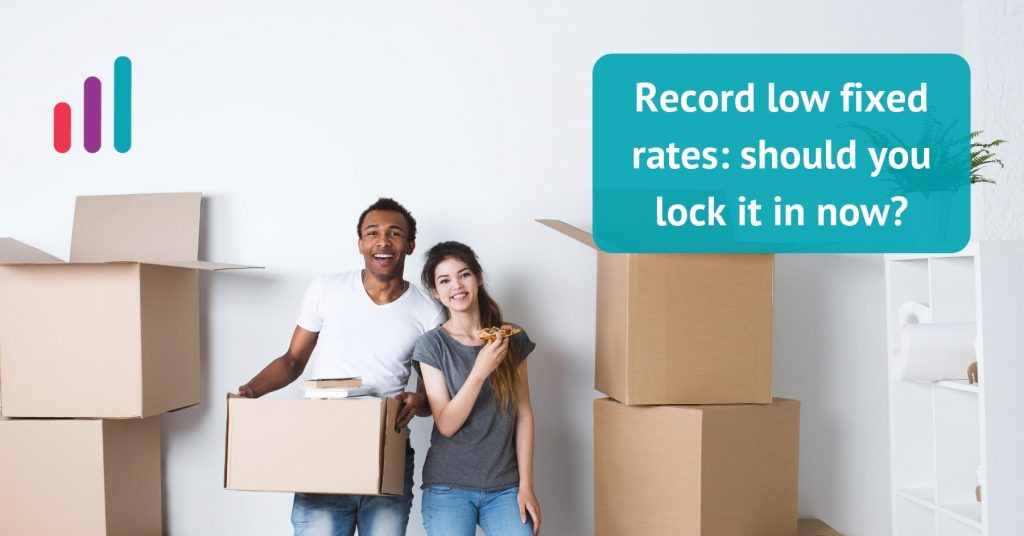Fixed rates are at an all-time low, and many are jumping at the opportunity to refinance their property or purchase their new home. Locking in your rate now may seem like the obvious choice as it gives you the certainty of what your repayments will be. However, if you’re after flexible repayment and the option to make additional payments or pay your loan off early, a fixed rate does not usually allow that. So, are these low fixed rates as good as it sounds and what should you consider when making this decision?
Can you make extra repayments?
Before you commit to a fixed rate, you should check if there are any restrictions on making extra repayments. Some lenders may incur a fee or limit the number of repayments you’re allowed to make during the rate period.
Will this help you with your cash flow?
One of the biggest plus points of a fixed rate is that you will know exactly how much you are expected to pay each month as the interest rate will remain constant throughout your mortgage. This is especially beneficial for those who are on a budget and can help with your cash flow.
Are you allowed to leave the loan early?
It is important that you confirm with the lender if you are permitted to complete repayments before the end of your loan period. If the market interest rate falls at the time of your break, then you could be up for a cost to compensate the bank, potentially amounting to thousands of dollars. Moneysmart explains that these ‘break fees’ are generally higher the more interest rates have come down since you took out the fixed rate loan.
What is the revert rate?
Another important aspect to consider is the revert rate. The revert rate is the interest rate that a loan moves to after the fixed term. These rates are typically higher, which could mean that you will need to renegotiate your loan for a better and more competitive deal once the fixed term ends.
Are you locking in repayments that you are comfortable paying?
Choosing to lock in a fixed rate should be for securing an interest that is affordable and suitable to you as the borrower, not about speculating on future interest rates movements.
If you are unsure whether or not to commit to a fixed rate term for a long period, there is another option that could work for you. You could consider splitting the balance of your home loan into two parts; one portion to be charged at a fixed rate for a certain period, and the remaining half charged at the more usual variable interest rates. Some lenders offer this option, so be sure to do your research before settling on a choice.
How can I make the switch?
If you have decided to refinance, this will require a whole new loan application. There will be lots of paperwork to go through and documents to sign, which may require several hours to get sorted. However, the savings you will benefit from this may be well worth the effort. Here are the steps to make the switch:
- Check your current rate and start comparing home loan options to find better products.
- Check the ratio of your loan-to-value. You aren’t able to refinance unless you own at least 20% of the current property value. If your deposit was less than 20% and you have not paid off much of the loan, then switching will result in you having to pay the Lenders Mortgage Insurance again, even if you have already paid it from your previous loan application. Bear in mind that property values have dropped due to the pandemic, so you may not yet own 20% of your property’s value at the moment.
- Research and find a mortgage that you think will work best for you and submit an enquiry. Your lender will get in touch to help you through the application process. Alternatively, you can also talk to a mortgage broker who will be able to help you find the best option and apply for the loan on your behalf.
- Prepare all the documents you will need to accompany your application. You will need to provide proof of identity and information about your bank accounts, assets, and any other debts. The lender will want to take a close look at your financial standing, so make sure your finances are in good order before applying.
- Once your application is approved, your lender will take over the mortgage and handle the rest from there!
If you need help refinancing your home loan, the team at FutureNow Finance are here to help. We can advise on the best home loan rate for you and discuss a solution that suits you and your circumstance. Call 1300 013 730 or email hello@futurenowfinance.com.au

